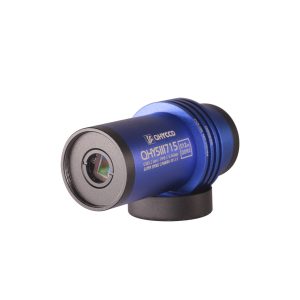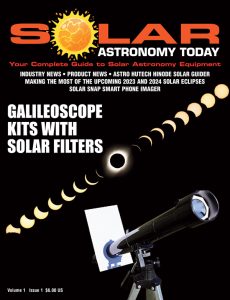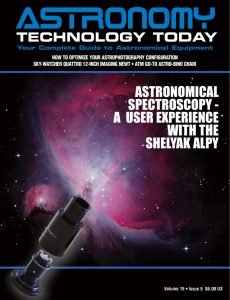The QHY 5-III-715C camera is an affordable solar, lunar and planetary camera and at the same time a perfect guiding module for extremely short focal lengths. It is an ultra high-resolution color camera with the very sensitive back-illuminated (BSI) Sony IMX715 color CMOS sensor with extremely low readout noise. Along with enhanced near-infrared sensitivity, this Sony 8.4MP sensor has a pixel size of 1.45um and an effective pixel area of 3840 x 2192. In addition, it has a full-well capacity of 5.7ke.
 The QHY 5-III-715C camera is part of the QHY 5III series and this updated version offers a number of enhancements including a robust 512MB DDR3 image buffer that speeds up imaging processing times. This latest version of the 715C also offers a new front-end design which increases compatibility with off-axis guiders (OAGs) and other accessories. In addition, it adds a USB3.2 type-C interface for power and PC connectivity which enables frame rates of up to 42 frames per second at full resolution (lucky imaging for the Sun and Moon) and significantly more for ROI (planets). It also offers a ST4 guide port for guiding.
The QHY 5-III-715C camera is part of the QHY 5III series and this updated version offers a number of enhancements including a robust 512MB DDR3 image buffer that speeds up imaging processing times. This latest version of the 715C also offers a new front-end design which increases compatibility with off-axis guiders (OAGs) and other accessories. In addition, it adds a USB3.2 type-C interface for power and PC connectivity which enables frame rates of up to 42 frames per second at full resolution (lucky imaging for the Sun and Moon) and significantly more for ROI (planets). It also offers a ST4 guide port for guiding.
The QHY 5-III-715C camera specifications include:
– CMOS Sensor : Sony IMX715
– Pixel Size: 1.45um*1.45um
– Effective Pixel Area: 3840*2192
– Effective Pixels: 8.4 Mega Pixel
– Full-well: 5.7ke-
– Readout Noise: 0.87-2.17e-
– AD Sample Depth: 12-bit (output as 16-bit and 8-bit)
– Built-in Image Buffer: 512MB DDR3 Memory
– Exposure Time Range: 11us-900sec
– Shutter Type: Electric Rolling Shutter
– Computer Interface: USB3.2 Gen1 Type-C
– Guide Port: ST4
– Telescope Interface: 1.25-inch, compatible with CS-port and C-port lenses by replacing the front-end connector
– Front end: Standard replaceable IR anti-reflection glass
– Back Focal Length: 17mm (with adapter); 8±0.5mm (without adapter)
– Chip package size: 5.6mm x 3.2mm
– Debayer: GBRG
– Weight: 90g
You can learn more about the QHY 5-III-715C camera here.


The Sun is more active than it’s been in years. And if you want to know your equipment options from solar glasses to the most out of this world solar viewing and imaging options, check out our free publication – The Definitive Guide to Viewing and Imaging the Sun – simply click here and enjoy reading!
And to make it easier for you to get the most extensive news, articles and reviews that are only available in the magazine pages of Astronomy Technology Today, we are offering a 1-year magazine subscription for only $6! Or, for an even better deal, we are offering 2 years for only $9. Click here to get these deals which only will be available for a very limited time. You can also check out a free sample issue here.

